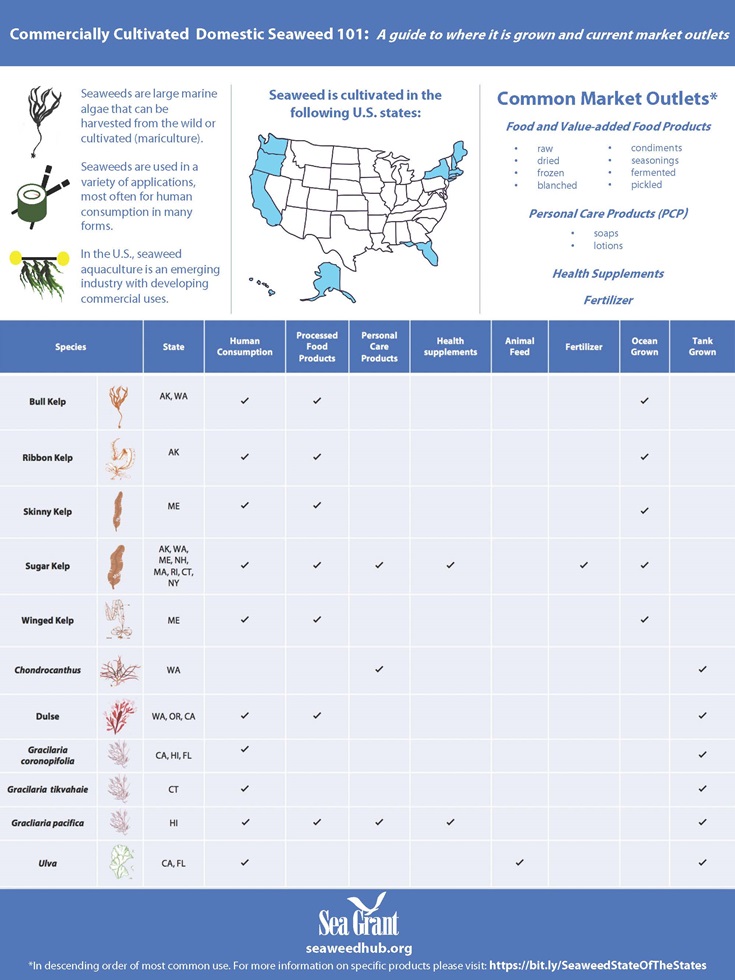Seaweed Aquaculture
Overview
The Connecticut Department of Agriculture Bureau of Aquaculture (DoAg) is responsible for licensing Seaweed Producers, which are defined by the Connecticut General Statutes as "any person who engages in the controlled rearing, cultivation and harvesting of seaweed." DoAg is responsible for regulating seaweed as a Raw Agricultural Commodity.
The 2025 Seaweed Raw Agricultural Commodity Hazards Guide provides an overview of the state and federal regulatory framework, steps to become a seaweed producer, and an introduction to hazards and controls for raw seaweed cultivated for human consumption.
How to become a Seaweed Producer
See the 2025 Seaweed RAC Hazards Guide, which provides a step-by-step introduction to state and federal regulations and permitting requirements to become a Seaweed Producer.
Additional relevant links and contacts include:
- DoAg is responsible for classifying shellfish growing areas and issuing aquaculture licenses, including seaweed aquaculture licenses. Seaweed producers must cultivate seaweed in Approved or Conditionally Approved areas, as classified by the Bureau of Aquaculture. Prospective producers can identify Approved or Conditionally Approved areas on the Aquaculture Mapping Atlas.
- Any individual or company that wants to grow seaweed for any purpose must complete the Joint Agency Application to Conduct Marine Aquaculture in Connecticut and have a Seaweed Producer license from the Bureau of Aquaculture prior to deploying any gear. Matthew.Bartell@ct.gov assists applicants through the aquaculture permitting process.
- All Seaweed Producer licenses must be completed using www.elicense.ct.gov. A step-by-step user guide is available for download.
- State statutes previously required the DoAg to issue Aquaculture Certificates, but this language was replaced with "license;" therefore, the DoAg is no longer issuing Aquaculture Certificates.
-
Any seaweed producer intending to process seaweed (e.g. freeze, dry, blanch) must have the appropriate license from the Bureau of Aquaculture for cultivating raw seaweed, complete the required facility inspections, and comply with Consumer Protection Standards, prior to processing seaweed. Contact the Connecticut Food and Standards Division (dcp.foodandstandards@ct.gov) for additional information on the Consumer Protection requirements.
Seaweed Industry Profile
In 2024, there were 10 kelp aquaculture companies that grew a total of 69,246 pounds of sugar kelp. No other seaweeds are being cultivated in Connecticut at this time. Three of these companies sold kelp for food, of which only one is certified to process kelp to create products like kelp noodles, and the other two are only certified to sell kelp as a raw agricultural commodity. 1,435 pounds (2%) was reported as food sales, and the remainder was used to create agricultural products like compost, fertilizer, and biostimulants.
Connecticut SeaGrant provides Seaweed Outreach and Extension Activities.


